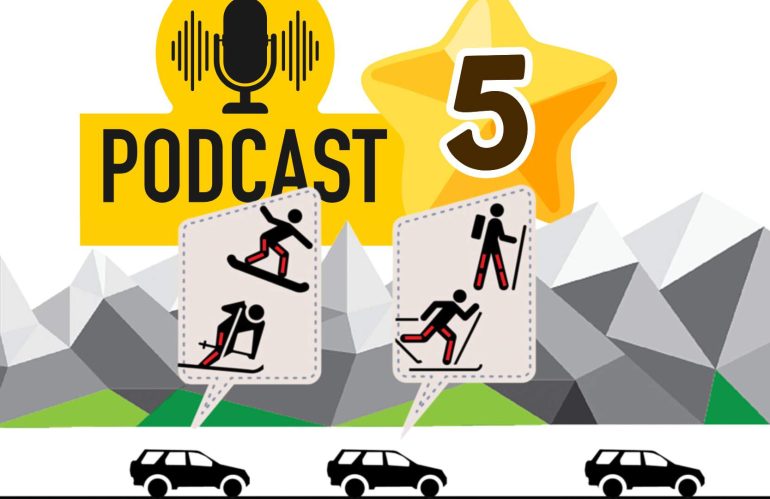Can you use exoskeleton technology to your advantage if you want to go out and have some fun? Absolutely! Join Bobby and Tom in a conversational overview of consumer/commercial exoskeletons and similar technology. This episode discusses developments in skiing, fitness, hiking, STEM education, and training wearables. For the first time in this episode, we also spend more time on similar technology that is not wearable but has some of the same goals of enabling people to have a better time with fitness or sports activities.
Exoskeletons and Wearable Robotics Podcast Epidose 5: Application to Consumer Exoskeletons is Available On:
YouTube:
Buzzsprout:
And most major podcast distributors, including Apple Podcast and Spotify.
If you enjoy this podcast, please support its creation on Patreon:
Nine years in, Exoskeleton Report now has a Patreon site: https://www.patreon.com/ExoskeletonReport. Your support is critical in offsetting the financial cost of running the Exoskeleton Report and expressing confidence that the work done and published here is meaningful and brings us one step closer to a physical revolution.
Special thanks to our first Patreon supporters!
- V.I.P. Level: Rita Vazquez-Torres, Volker Bartenbach
- Corporate Level Supporter: Josh Caputo at Humotech
Your support is invaluable, and I’m incredibly grateful for your belief in Exoskeleton Report’s mission to provide objective, hype-free, and science-fiction-free news and information on exo technology.
Summary of Episode 5:
(Generated with the help of ChatGPT): The podcast discusses the emerging consumer applications of exoskeleton technology, focusing on recreational, fitness, and mobility devices. Exoskeletons are becoming increasingly popular in sports, particularly skiing, where knee wearable devices have been used to help individuals ski for more extended periods without knee and back pain. These exos act as a support system, similar to a car’s suspension, reducing the strain on the body. The conversation highlights how exoskeletons can integrate seamlessly with existing ski gear, making them an easy addition to a skier’s equipment and providing significant benefits to older skiers or those with physical limitations.
In addition to skiing, the discussion moves on to using exoskeletons for hiking and mobility enhancement. Devices in this market aim to assist people with walking and hiking, allowing individuals, particularly older adults or those with physical conditions, to continue enjoying outdoor activities. The example of a family member who loves hiking but has physical limitations is shared, illustrating the need for exoskeletons that can be easily carried and deployed when needed for uphill climbs. This segment underscores the importance of lightweight, portable exoskeletons that can alleviate strain on the body during physical exertion.
The podcast also touches on the challenges of designing exoskeletons that efficiently assist users without adding significant metabolic cost. The conversation emphasizes the importance of timing in the exoskeleton’s assistance to ensure it matches the user’s natural movements, as even slight deviations can increase the user’s effort. Research into intuitive control systems is ongoing, with work being done on how to make exoskeletons better understand the user’s intentions.
The episode continues by introducing the concept of resistive exoskeletons, which are being explored for applications such as fitness and have origins in outer space travel. Instead of traditional weights, these systems provide resistance directly at the joints, potentially offering a more targeted and effective workout. The podcast highlights how these devices could revolutionize fitness routines and how the technology overlaps different applications.
A brief exploration of STEM education exoskeletons follows, where devices are designed to introduce students to engineering, design, and human-machine interface. These educational exoskeletons include guides for building and programming, offering hands-on learning opportunities. The hosts also mention the growing market for exoskeletons integrated with virtual reality (VR) for training and gaming, where users can experience realistic force feedback in virtual environments. This leads to a discussion about the future potential for combining exoskeletons with VR to improve training outcomes.
oThe podcast concludes with a look at exoskeleton-adjacent technologies, such as golf training systems and devices that prevent ankle twists or wearable fall-protection airbags for the elderly. These technologies are viewed as part of the broader wearable robotics ecosystem that is gaining traction in the consumer market. The hosts express excitement about the future of consumer exoskeletons, predicting that as more people adopt them for recreational purposes, they will become increasingly integrated into everyday life.
This article was initially posted on the Exoskeleton Report.
